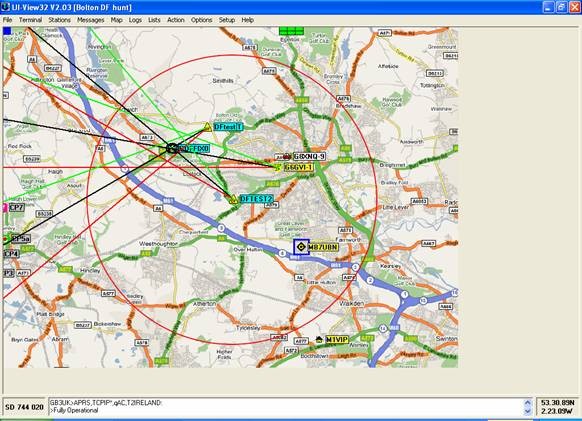
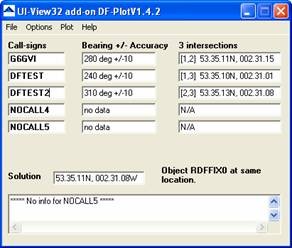
Some years ago, a group of Dutch Amateurs had written UI-DF Plot as an Add-on to the popular UIView32 program which we use for APRS. This can decode bearings received via APRS packets, plot them on a map, and even calculate the intersection of the bearings, and send out an APRS Object at the expected target position!


These bearings may be manually-derived (taken with any kind of directional antenna), and then sent as APRS packets from the keypad of one of the Kenwood D7-series sets, or with a TNC or OT2m unit.
But once Bill M0MBX showed me the Montreal mkIII Doppler unit with a PC interface which he'd built, I was intrigued and wanted to try this for myself.
Unfortunately, the format of these bearings is slightly different than that used by UI-DF Plot, but I was able to design and build a little PIC circuit to interface between them. My latest version connects to an OpenTracker OT2 APRS tracker and a GPS receiver, and links in the serial stream from the Doppler RDF unit so that the bearings are sent out as Beacon packets in a format which can be interpreted by UI-DF Plot.
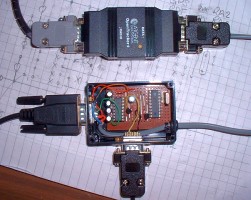
Furthermore, I've developed another PIC board to fit inside my old Datong DF1 Doppler unit, so that it now outputs similar serial data to Bill's Montreal unit.
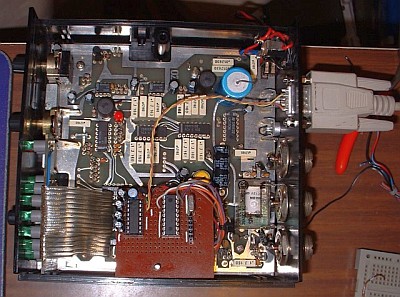
So with this kit, we can both drive around and automatically send back our bearings to a central co-ordinator, who can then vector us in to the target!
I've also developed another system, in which my Garmin eTrex Summit is attached to the boom of my DF aerial, so that the bearing is read from its internal electronic compass and then transmitted with an OpenTrackerPlus.
Next I'll be working on a third unit, to send manual bearings (set up on thumbwheel switches) at the push of a button: watch this space for more details.
If you try any this for yourself, then drop me an email and let me know how you get on.
June 2009: We tested out some of these systems in the Bolton Wireless Club DF Hunt on 22-Jun, and proved the mechanism for sending bearings and receiving target locations via APRS: we just need to work on improving the accuracy of our initial bearings!
August 2009: We tried these systems again in the Bolton Wireless Club / Bolton RAYNET Group DF Hunt on 24-Aug.
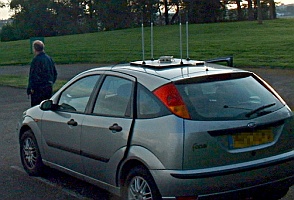
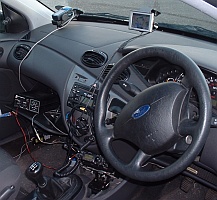
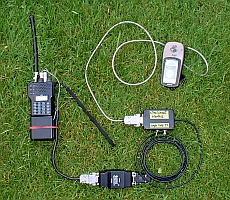
Our APRS transmission systems worked well, but we found some shortcomings with the UI-DF Plot program:
Therefore on our next event we'll be trying out the RadioMobile program:
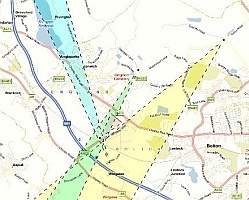
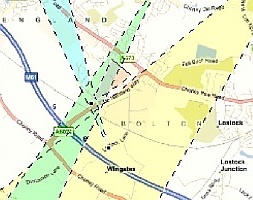
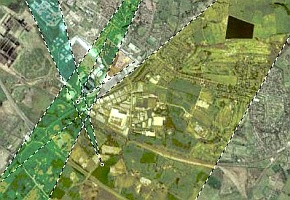
June 2011: We're now experimenting with the SoundDoppler program from PA3BNX, so I've done another mod to my Datong DF1 to feed out the audio reference tone along with the demodulated FM audio:
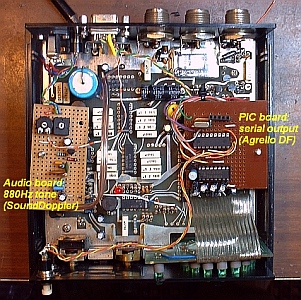
These two signals are fed to the stereo audio inputs of a laptop PC, which does all the signal processing to determine the bearing of the incoming signal. It also reads the vehicle heading from an attached GPS and plots the bearing on a UIView-format map using the free MyMapping program.